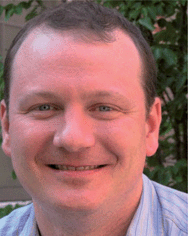Emerging investigators 2015
This themed issue of Analytical Methods consists of invited contributions including perspectives, reviews, and original research articles from emerging investigators in the analytical sciences. The term “emerging” in this sense is used loosely. Although early in their careers, many of the contributors to this issue have firmly established themselves as independent investigators and key players helping define the future landscape of measurement science.The topics of this issue adhere to a founding tenet of Analytical Methods—to highlight the link between fundamental and applied analytical sciences. As analytical scientists this link is especially important as our work sits at a nexus of traditional chemistry fields, and often finds impactful applications throughout biology, medicine, engineering and nanotechnology. We thus have unique opportunities to tie disciplines together by applying and translating fundamental concepts of (bio)chemical measurements to a myriad of current and emerging challenges of societal importance. Contributions here highlight this link between fundamentals and applications through the eyes of many of our brightest young stars.
This issue has 13 reviews and 31 original research reports from research groups around the world. Contributions cover traditional analytical disciplines of electrochemistry, spectroscopy, mass spectrometry and chromatography, and reports are often framed in context of pressing societal issues. For instance, Rodriguez-Lopez reviews techniques to characterize reaction intermediates at catalytic interfaces (c5ay00503e), Munoz describes measurement of metals in biodiesel samples (c4ay02313g), Romero-Gonzalez details food safety from an analysis perspective (c5ay00263j), Mukaibo presents a method for in situ strain measurement in Li-ion batteries (c5ay00626k), and Mulligan discusses monitoring clandestine synthesis of methamphetamines (c5ay00511f). Reports which highlight applications that are more fundamental in nature, but still with an applied bent, include infrared protein characterization, by Thielges (c5ay00523j), analysis of three-dimensional cell cultures with mass spectrometry, by Hummon (c5ay00293a), and density-controlled functionalization of carbon fiber electrodes, by Hashemi (c5ay00501a). The list of outstanding contributions for this issue goes on, but with 44 articles, there simply isn't space to acknowledge them all. So we encourage you to browse the issue—there is something for everyone!
We would like to draw particular attention to the contribution on undergraduate education by Kovarik (c5ay00510h). This is the first perspective in the history of Analytical Methods, which serves to make this an even more groundbreaking issue.
We are happy to have been able to help in corralling the talent present in this issue and hope you will enjoy the contributions from this new wave of analytical scientists as much as we do.
Lane Baker
Indiana University
Ryan Bailey
University of Illinois at Urbana-Champaign
| This journal is © The Royal Society of Chemistry 2015 |


